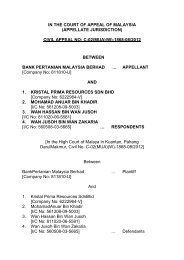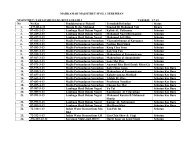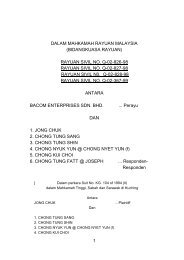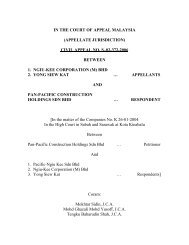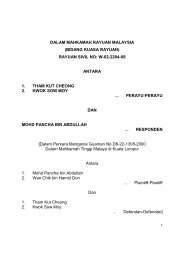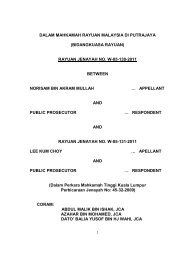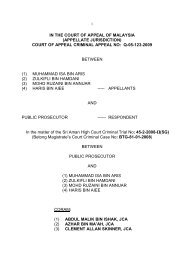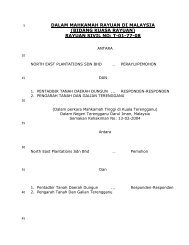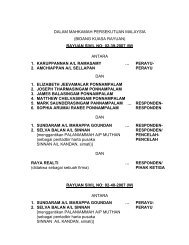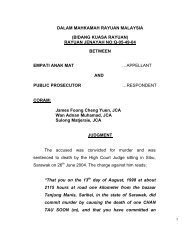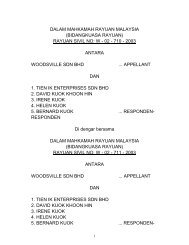THE PALACE OF JUSTICE CIVIL APPEAL NO. P-02-2074-2011 ...
THE PALACE OF JUSTICE CIVIL APPEAL NO. P-02-2074-2011 ...
THE PALACE OF JUSTICE CIVIL APPEAL NO. P-02-2074-2011 ...
Create successful ePaper yourself
Turn your PDF publications into a flip-book with our unique Google optimized e-Paper software.
the contention made in the present case that the defendants, as the<br />
architects, owe the plaintiffs, as purchasers of the industrial buildings,<br />
a duty of care to ensure that the CFOs are obtained without undue<br />
delay. We are, however, prepared to accept the plaintiffs’ contention<br />
that the defendants, as the architects of the project, would be able to<br />
foresee that the various acts or omissions complained off, assuming<br />
for the moment that the allegations to some extent are true, would<br />
result in a delay in the obtaining the CFOs and consequential<br />
financial loss to the plaintiffs. But ‘foreseeability of harm or damage’ is<br />
not the only test or factor in determining the existence of a duty of<br />
care. In other words, as a matter of law, foreseeability of injury or<br />
damage does not automatically lead to a duty of care (see Simaan<br />
General Contracting Co v Pilkington Glass Ltd (No. 2) [1988] QB<br />
758; and Man B & W Diesel). As a matter of law, there are other<br />
considerations to be taken into account as well.<br />
It hardly needs stressing here that we are mindful of the fact that we<br />
have to tread carefully before extending the principle in Donoghue v<br />
Stevenson [1932] AC 562 to the facts of our case. For, any<br />
extension of the principle to a new situation may have far-reaching<br />
26



